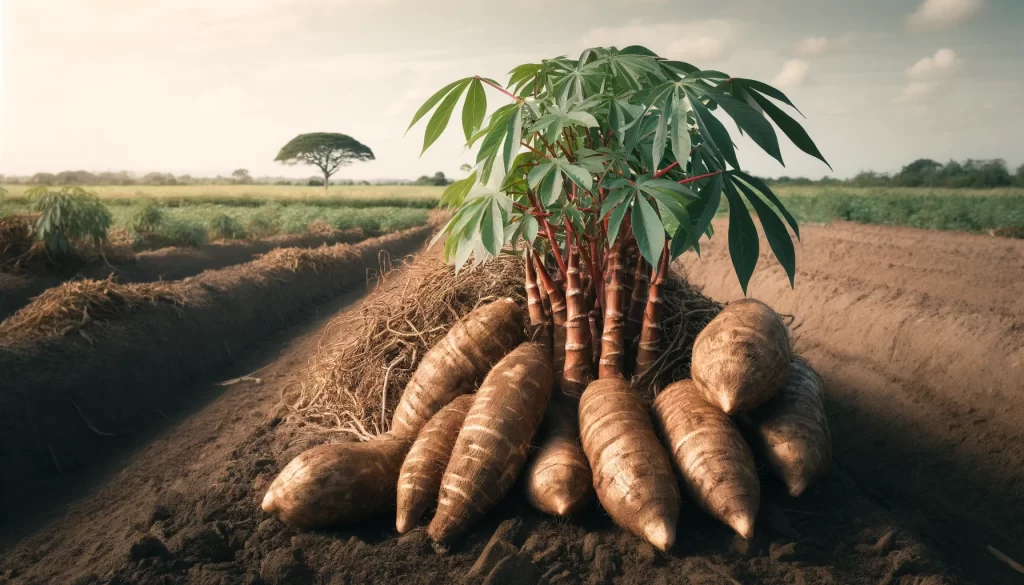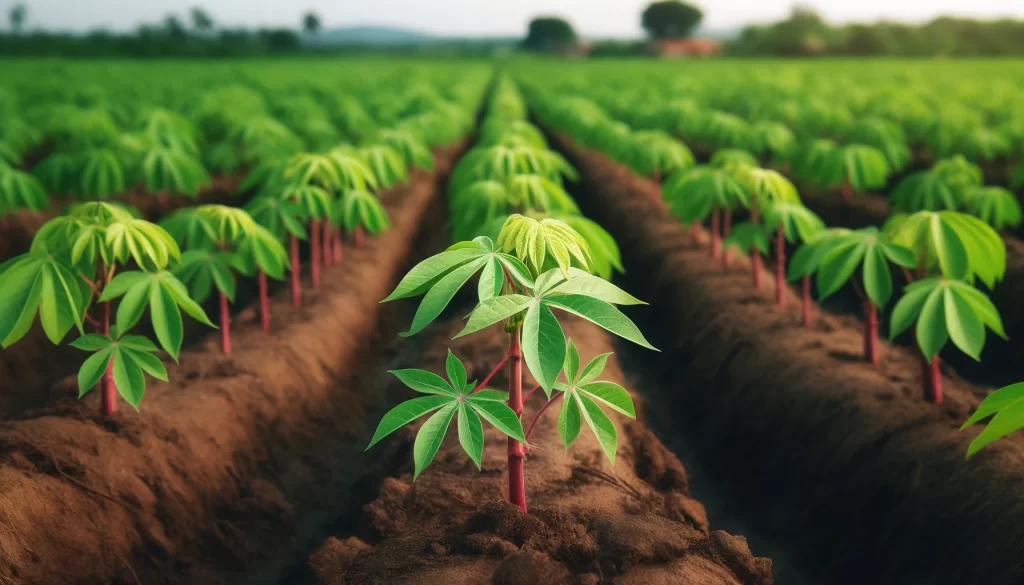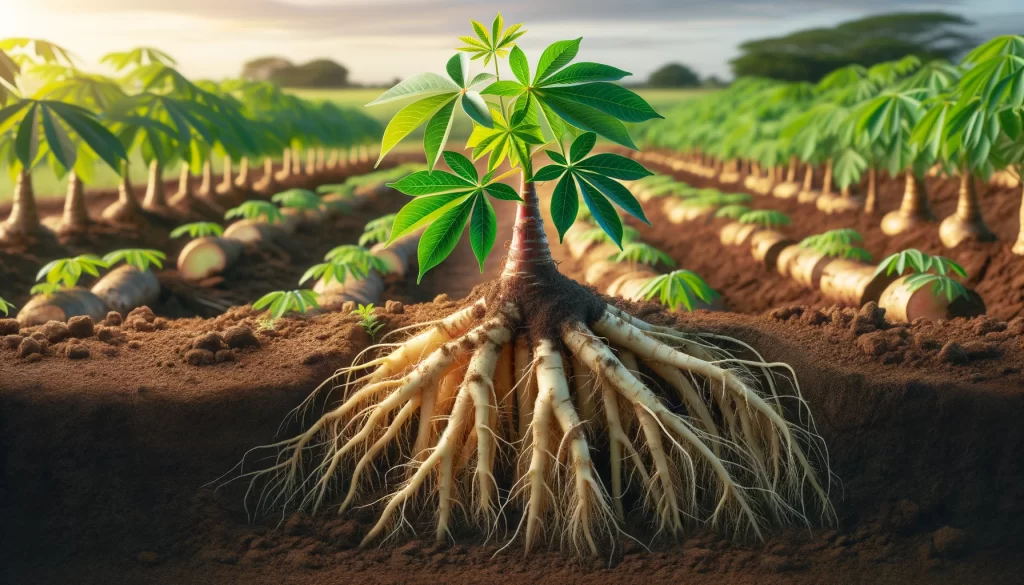Cassava, also known as yuca, is a crucial tropical crop in many regions around the world due to its ability to produce a significant source of carbohydrates under adverse climatic conditions. Understanding the phenological stages of cassava is essential for optimizing agricultural practices and ensuring high-quality production. Each phase of the cassava life cycle, from planting to harvest, requires specific management to maximize yield and root quality. In this detailed analysis, we will explore the different phenological stages of cassava, providing technical descriptions of each phase and the appropriate agricultural practices for each. This knowledge is crucial for farmers and agricultural professionals seeking to improve the efficiency and outcomes of their cassava cultivation.

1. Planting and Emergence
During the planting and emergence stage, healthy and high-quality cuttings approximately 20-30 cm long are selected. The cuttings are planted in furrows or holes at a depth of 5-10 cm, with a spacing of 1 meter between plants and 1 meter between rows. This phase lasts between 15 and 30 days, depending on climatic conditions. It is crucial to keep the soil well-drained and free of weeds during this period. Irrigation should be regular but moderate, avoiding excess water that could cause the cuttings to rot.
Best Practices:
- Selection of healthy and high-quality cuttings.
- Proper soil preparation, ensuring good drainage.
- Planting at the recommended depth and distance.
- Moderate irrigation and weed control.

2. Vegetative Development
In this phase, which extends from 60 to 90 days, cassava develops its root system and aerial parts, forming vigorous leaves and stems. It is essential to provide essential nutrients, especially nitrogen (N) and phosphorus (P), to support vegetative growth. Irrigation should be regular, especially during dry periods, and constant weed control should be maintained to avoid competition for nutrients and water.
Best Practices:
- Application of fertilizers rich in nitrogen and phosphorus.
- Regular irrigation, adjusted to climatic conditions.
- Constant weed control through manual or chemical weeding.

3. Root Formation and Development
During the next 90 to 180 days, the tuberous roots begin to develop and accumulate starch, which is the plant’s main energy source. Potassium (K) becomes crucial at this stage to promote root thickening and quality. It is advisable to apply potassium-rich fertilizers and continue with adequate irrigation. Pest and disease control should be rigorous, as growing roots are vulnerable to various pathogens and pests.
Best Practices:
- Application of potassium-rich fertilizers.
- Adequate irrigation to maintain soil moisture.
- Vigilance and control of pests and diseases.

4. Root Maturation
In this phase, which lasts approximately 180 to 270 days, the roots reach their optimal size and weight. The plant reduces its vegetative growth and redirects energy towards root thickening. It is crucial to reduce irrigation to avoid excess moisture that could damage mature roots. Pest and disease monitoring should continue, although the need for fertilization decreases in this stage.
Best Practices:
- Reduce irrigation to avoid excess moisture.
- Continue monitoring and controlling pests and diseases.
- Reduce fertilization, focusing on crop maintenance.
5. Harvest
Cassava harvesting takes place between 9 and 12 months after planting, depending on the variety and climatic conditions. The optimal harvest time should be chosen when the roots have reached their ideal size and starch content. Harvesting is done manually or with specialized machinery, taking care not to damage the roots. Subsequently, the roots should be cleaned and, if necessary, cured in a dry, ventilated place before storage or processing.
Best Practices:
- Determine the optimal harvest time.
- Manual or mechanized harvesting, avoiding root damage.
- Clean and cure the roots before storage or processing.

Implementing these best practices at each stage of the cassava life cycle is essential to maximize yield and quality. Each phase has its own challenges and requirements, and attention to these details can make a significant difference in the success of the harvest.
Phenological Stages of Cassava, Duration in Days of Each Stage, and Nutrient Recommendations
| Phenological Stage | Duration (days) | Nutrient Recommendation (kg/ha) |
|---|---|---|
| Planting and Emergence | 15-30 | N: 40-60, P: 20-30, K: 20-30 |
| Vegetative Development | 60-90 | N: 100-150, P: 40-60, K: 60-80 |
| Root Formation and Development | 90-180 | N: 50-70, P: 30-40, K: 80-120 |
| Root Maturation | 180-270 | N: 20-30, P: 20-30, K: 40-60 |
| Harvest | 270-360 | N/A |
 AgronoBlog – Agriculture Blog
AgronoBlog – Agriculture Blog